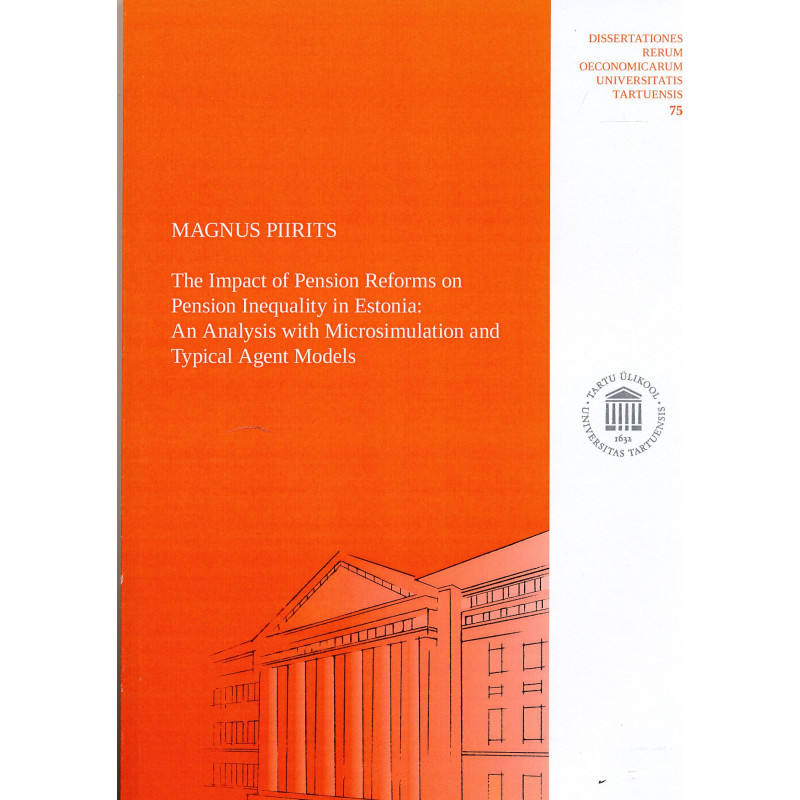



Tartu : University of Tartu Press, 2022
ISBN: 9789949038565
219 pages : illustrated
Dissertationes rerum oeconomicarum Universitatis Tartuensis ; 75
Softcover new book
Doctoral theses defended at the University of Tartu, summary in Estonian
After regaining independence, Estonia had until 2000 a pension system where pension rights were earned according to the length of service. As a result, pension inequalities have been relatively low. In 2002 a funded pension scheme was introduced, but as joining the scheme was optional for older workers it will take several decades to achieve its full effect on pension distributions. The same applies to the earnings-related unit of the state pension introduced in 2000. For these reasons pension inequalities in Estonia have been low, albeit gradually increasing. The focus of this thesis is on the effects of pension reforms on the future pension inequalities. A microsimulation model has been developed for this purpose, which can simulate pensions for the total population up to 2100. In the last decades, pension reforms have been triggered mainly by the aging of population. To tackle the challenges of aging, pension age has been increased and pension savings encouraged. Future reforms will also be driven by changing forms of work and the globalization of work. According to simulations, the inequality of the total pensions (state and funded pensions in total) will increase in Estonia until 2050 and then start to decrease. Yet pension inequality in the future is 2.5 times lower than inequality of wages. Pension inequalities are significantly reduced by the strong redistribution mechanisms built into the state pension scheme. However, the funded schemes also help to reduce the transfer of wage inequalities into pension age. By the 2060s, the gross replacement rate of total pensions (state and funded pensions) will fall to 30% of the national average wage, and will increase thereafter, reaching 40% by 2100. The replacement rate will be boosted by the surplus of the state pension budget, which can be shared between existing retirees, as well as by the growing role of funded pensions. When dividing retirees into ten groups according to their pension size, the state pensions would notably be quite similar across the income scale in 2100 – the average replacement rate of pensions to the national average wage of the 2nd decile and 10th decile would vary by only 5 percentage points (26% vs 31%). If comparing the total pension (state and funded pensions) of the same deciles, the difference is over 30 percentage points (32% vs 65%). The compulsory funded scheme and, in particular, the voluntary funded scheme will contribute significantly to the increase of pensions.